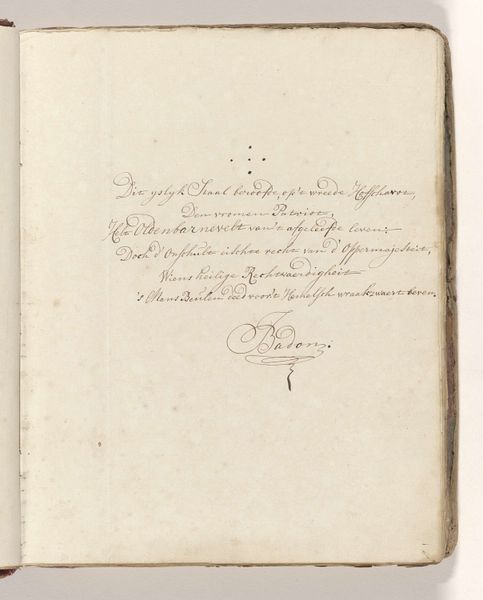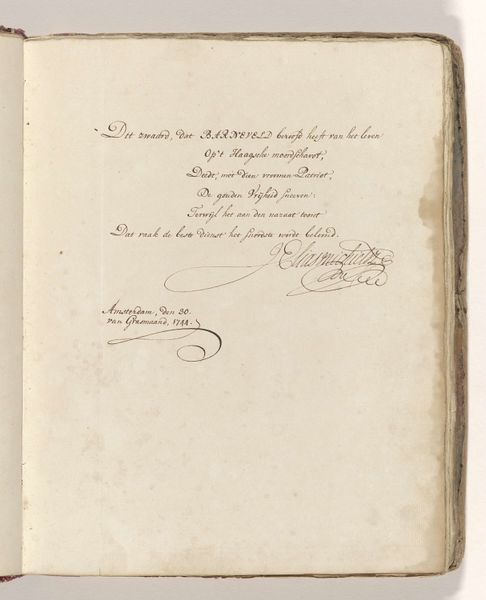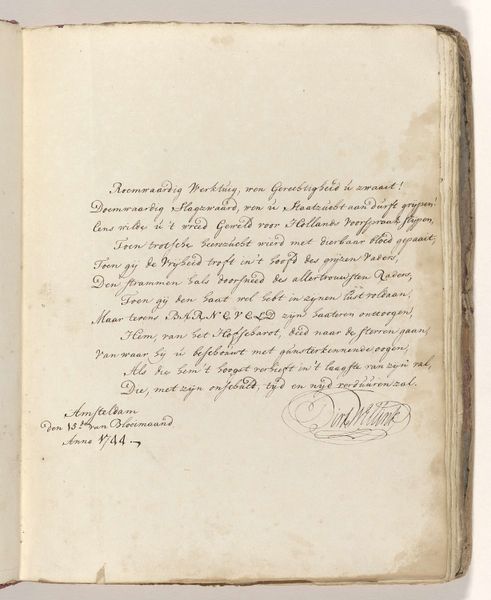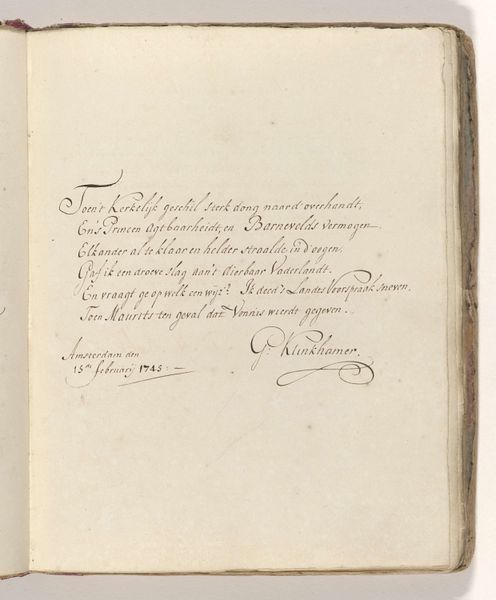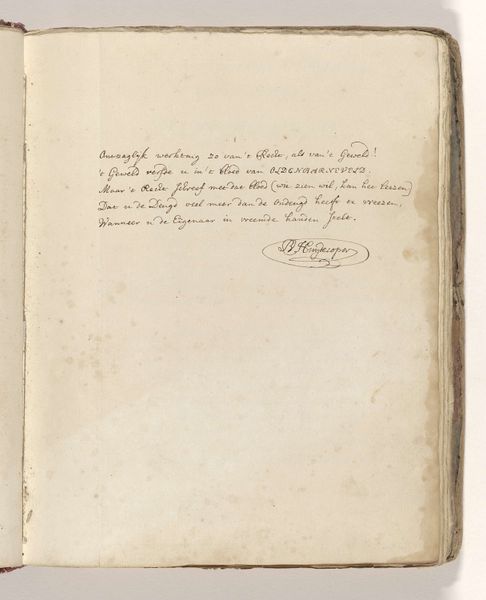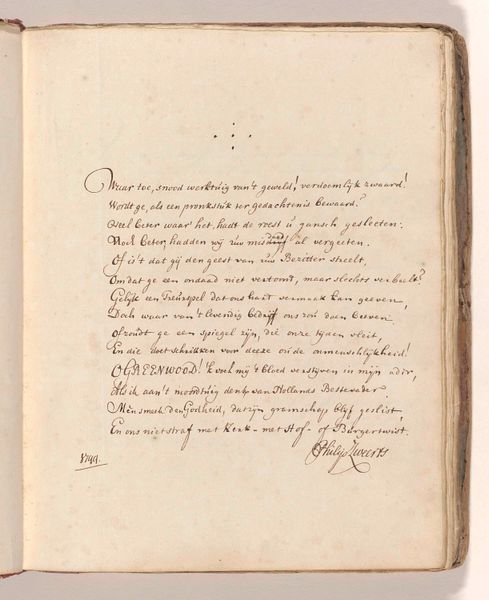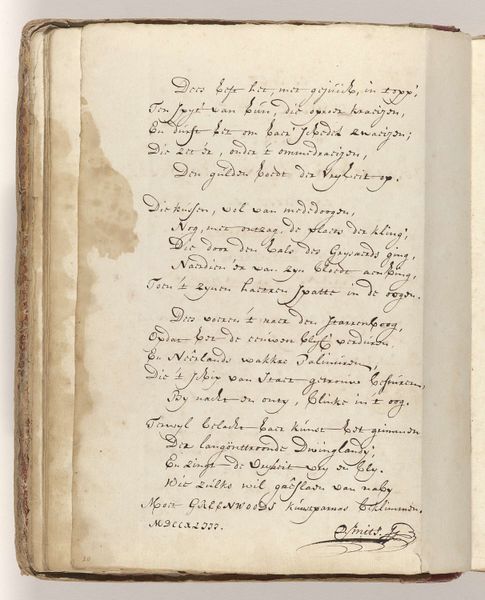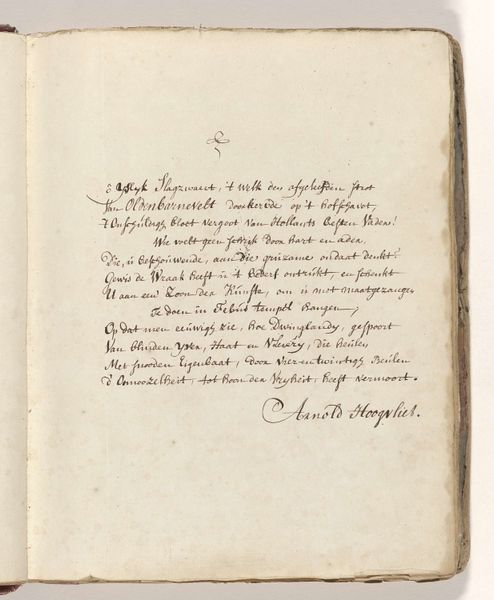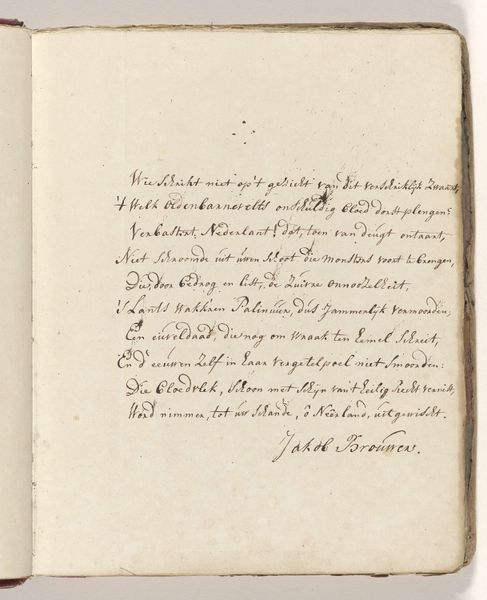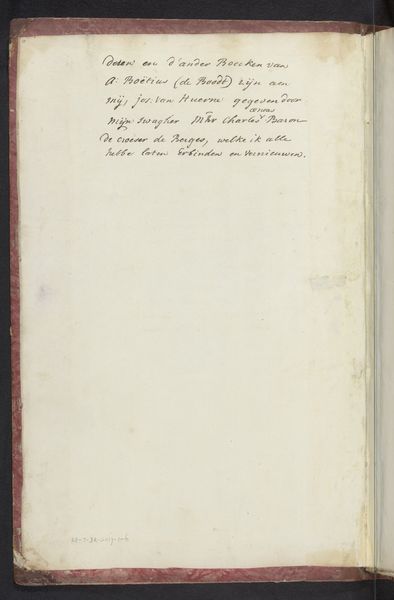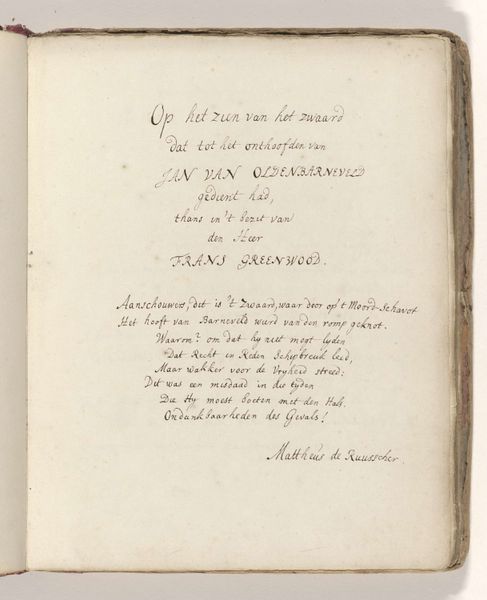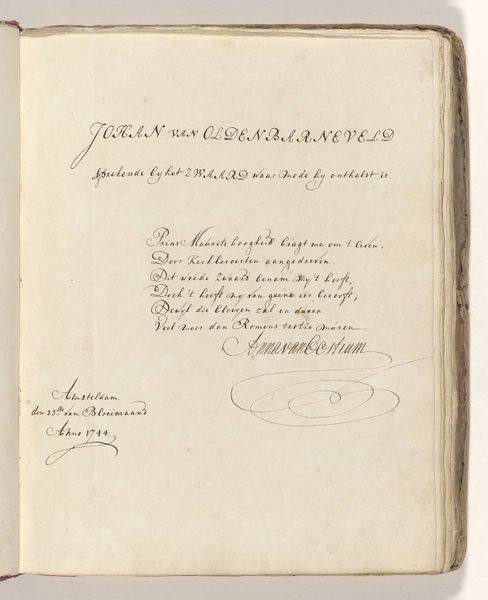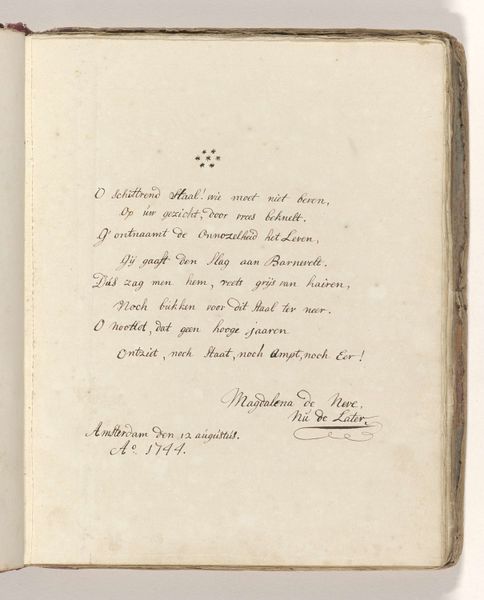
Gedicht op het zwaard waarmee Johan van Oldenbarnevelt in 1619 zou zijn onthoofd 1743 - 1745
0:00
0:00
drawing, textile, paper, ink
#
drawing
#
narrative-art
#
baroque
#
textile
#
paper
#
ink
#
calligraphy
Dimensions: height 275 mm, width 220 mm
Copyright: Rijks Museum: Open Domain
Editor: Here we have Katharina Froet's "Poem on the sword with which Johan van Oldenbarnevelt was supposedly beheaded in 1619," created between 1743 and 1745. It's ink on paper, possibly a page from a larger book or textile piece. It feels incredibly delicate, almost fragile considering its subject. What do you make of it? Curator: The process itself is quite interesting. Look at the choice of materials: paper, ink, a writing implement. These are readily available, relatively inexpensive, hinting at accessibility and perhaps even subversion. It's a poem about an execution, transcribed almost two centuries after the event. Froet’s choosing these humble materials speaks volumes about how stories and power dynamics were circulated. What statement do you think Froet might be trying to make? Editor: Perhaps by using simple materials, Froet democratizes the story of Van Oldenbarnevelt, moving it away from official narratives and into the realm of the everyday. The act of handwriting itself is a conscious labor. Curator: Exactly. And the "poem on a sword"— that highlights the labor required not only to create art, but to use that original tool of execution. Also note its Baroque style and its themes of narrative art, so each element contributes to a complex web of meanings, emphasizing labor, the physical production of both the object and text, and how social narratives are shaped through consumption and display. What has changed for you with this new reading of this artwork? Editor: I see the work now less as a historical document and more as a commentary on the tools and means by which history itself is written and circulated through culture. Thank you! Curator: Yes! This artwork now offers a powerful reflection on not only how we produce culture, but on how the tools, simple or complex, determine and preserve its social values.
Comments
No comments
Be the first to comment and join the conversation on the ultimate creative platform.
